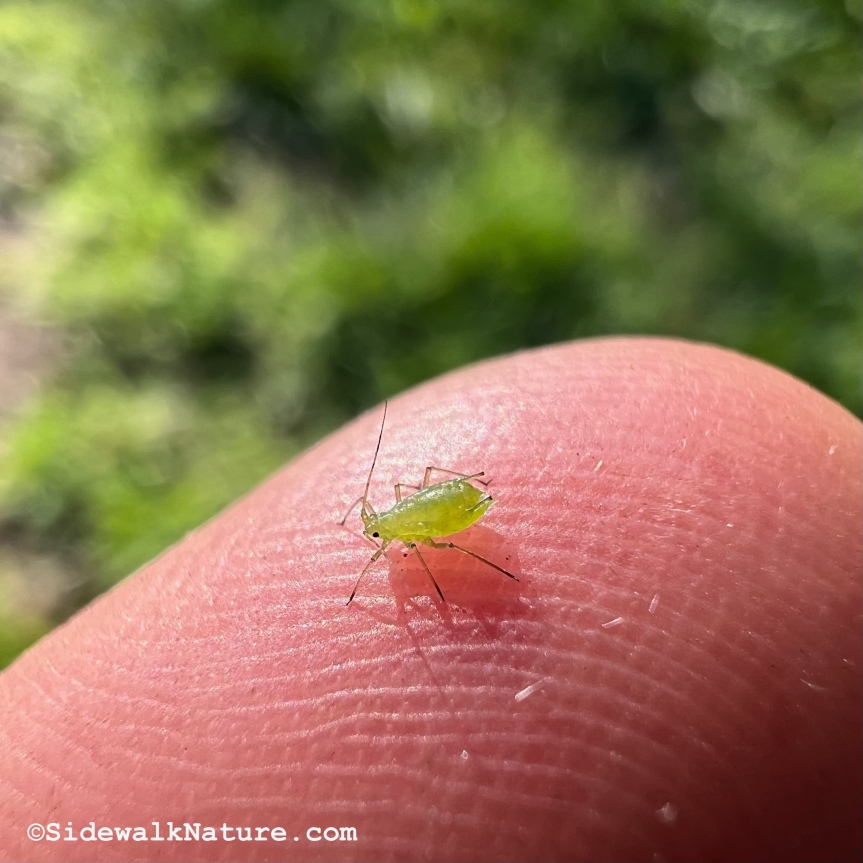
I am lucky to be in a gardening group with a friendly email list. We share plants, news, tips, questions. Today, someone asked what to do about April aphids on a late-blooming aster, and added, “There are a gazillion of them on the plant (I counted).”
This is someone who had done due diligence by looking for answers, but had found too many: No, don’t kill; Yes, do kill, but only with this, not that. What should they do?
What I should have done was congratulate them on having late-blooming asters—so important for late-season nectar / pollen / leaves / seeds! —and on trying to find a “best practices” solution to avoid harming the foodweb.
Good job, gardener!
But what I did was jump right in with zero manners and lots of info:
[Too-Long-Didn’t-Read version: pesticides will kill aphid predators along with the aphids.]
This time of year, most aphids are wingless, so they can’t fly away from us if we decide The Big Squish is required. The Big Squish = running a thumb and forefinger along a stem (or using a moist paper towel if squeamish).
Actually, it should be called the Selective Big Squish. Please keep reading to see what not to squish.
Continue reading “The Selective Squish: Aphids”










